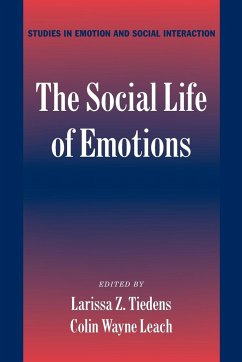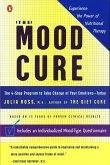Short description/annotation
This book examines the interplay of emotions and social relationships.
Main description
This book showcases new research and theory about the way in which the social environment shapes, and is shaped by, emotion. The book has three sections, each of which addresses a different level of sociality: interpersonal, intragroup, and intergroup. The first section refers to the links between specific individuals, the second to categories that define multiple individuals as an entity, and the final to the boundaries between groups. Emotions are found in each of these levels and the dynamics involved in these types of relationship are part of what it is to experience emotion. The chapters show how all three types of social relationships generate, and are generated by, emotions. In doing so, this book locates emotional experiences in the larger social context.
Table of contents:
Introduction: a world of emotion; Part I. The Interpersonal Context: 1. Empathy: negotiating the border between self and other Mark Davis; 2. Envy and its transmutations Richard H. Smith; 3. The bond threat sequence: discourse evidence for the systematic interdependence of shame and social relationships David S. Fearon Jr.; 4. Emotion as adaptive interpersonal communication: the case of embarrassment Rowland S. Miller; 5. Does expressing emotion promote well-being(?)33; It depends on relationship context Margaret S. Clark and Eli J. Finkel; Part II. The Intra-Group Context; 6. Emotional contagion: religious and ethnic hatreds and global terrorism Elaine Hatfield and Richard L. Rapson; 7. The emotional convergence hypothesis: implications for individuals, relationships, and cultures Cameron Anderson and Dacher Keltner; 8. Emotional variation within work groups: causes and performance sequences Larissa Z. Tiedens, Robert I. Sutton and Christina T. Fong; 9. Inside the heart of emotion: on culture and relational concerns Patricia M. Rodriguez Mosquera, Agneta H. Fischer and Antony S. R. Manstead; 10. Objectification theory and emotions: a feminist psychological perspective on gendered affect Laura B. Citrin, Tomi-Ann Roberts and Barbara Fredrickson; Part III. The Inter-Group Context: 11. Intergroup emotions: emotions as an intergroup phenomenon Diane M. Mackie, Lisa A. Silver and Eliot R. Smith; 12. Intergroup contact and the central role of affect in intergroup prejudice Linda R. Tropp and Thomas F. Pettigrew; 13. Judgements of deserving and the emotional consequences of stigmatization Cheryl R. Kaiser and Brenda Major; 14. Group based emotions and intergroup behavior: the case of relative deprivation Heather J. Smith and Thomas Kessler; 15. Interpreting ingroup's negative actions toward another group: emotional reactions to appraised harm Nyla R. Branscombe and Anca M. Miron; 16. Intergroup schadenfreude: conditions and consequences Russel Spears and Colin Wayne Leach.
This book examines the interplay of emotions and social relationships.
Main description
This book showcases new research and theory about the way in which the social environment shapes, and is shaped by, emotion. The book has three sections, each of which addresses a different level of sociality: interpersonal, intragroup, and intergroup. The first section refers to the links between specific individuals, the second to categories that define multiple individuals as an entity, and the final to the boundaries between groups. Emotions are found in each of these levels and the dynamics involved in these types of relationship are part of what it is to experience emotion. The chapters show how all three types of social relationships generate, and are generated by, emotions. In doing so, this book locates emotional experiences in the larger social context.
Table of contents:
Introduction: a world of emotion; Part I. The Interpersonal Context: 1. Empathy: negotiating the border between self and other Mark Davis; 2. Envy and its transmutations Richard H. Smith; 3. The bond threat sequence: discourse evidence for the systematic interdependence of shame and social relationships David S. Fearon Jr.; 4. Emotion as adaptive interpersonal communication: the case of embarrassment Rowland S. Miller; 5. Does expressing emotion promote well-being(?)33; It depends on relationship context Margaret S. Clark and Eli J. Finkel; Part II. The Intra-Group Context; 6. Emotional contagion: religious and ethnic hatreds and global terrorism Elaine Hatfield and Richard L. Rapson; 7. The emotional convergence hypothesis: implications for individuals, relationships, and cultures Cameron Anderson and Dacher Keltner; 8. Emotional variation within work groups: causes and performance sequences Larissa Z. Tiedens, Robert I. Sutton and Christina T. Fong; 9. Inside the heart of emotion: on culture and relational concerns Patricia M. Rodriguez Mosquera, Agneta H. Fischer and Antony S. R. Manstead; 10. Objectification theory and emotions: a feminist psychological perspective on gendered affect Laura B. Citrin, Tomi-Ann Roberts and Barbara Fredrickson; Part III. The Inter-Group Context: 11. Intergroup emotions: emotions as an intergroup phenomenon Diane M. Mackie, Lisa A. Silver and Eliot R. Smith; 12. Intergroup contact and the central role of affect in intergroup prejudice Linda R. Tropp and Thomas F. Pettigrew; 13. Judgements of deserving and the emotional consequences of stigmatization Cheryl R. Kaiser and Brenda Major; 14. Group based emotions and intergroup behavior: the case of relative deprivation Heather J. Smith and Thomas Kessler; 15. Interpreting ingroup's negative actions toward another group: emotional reactions to appraised harm Nyla R. Branscombe and Anca M. Miron; 16. Intergroup schadenfreude: conditions and consequences Russel Spears and Colin Wayne Leach.








